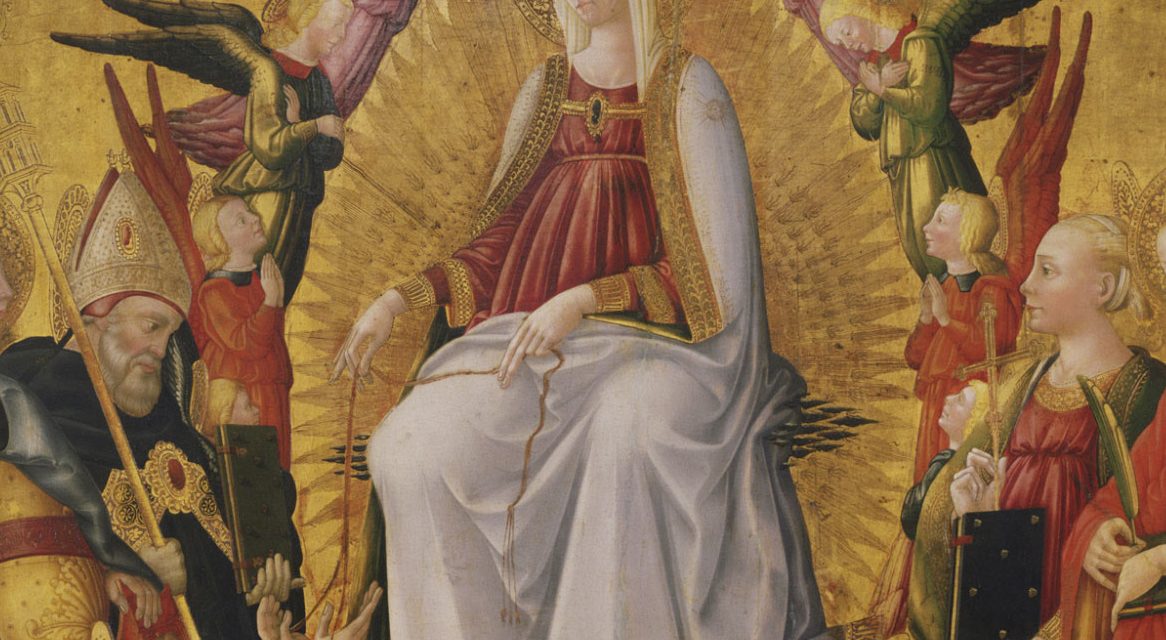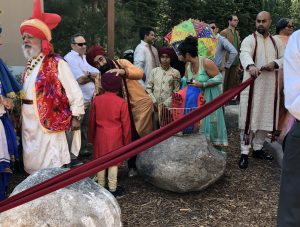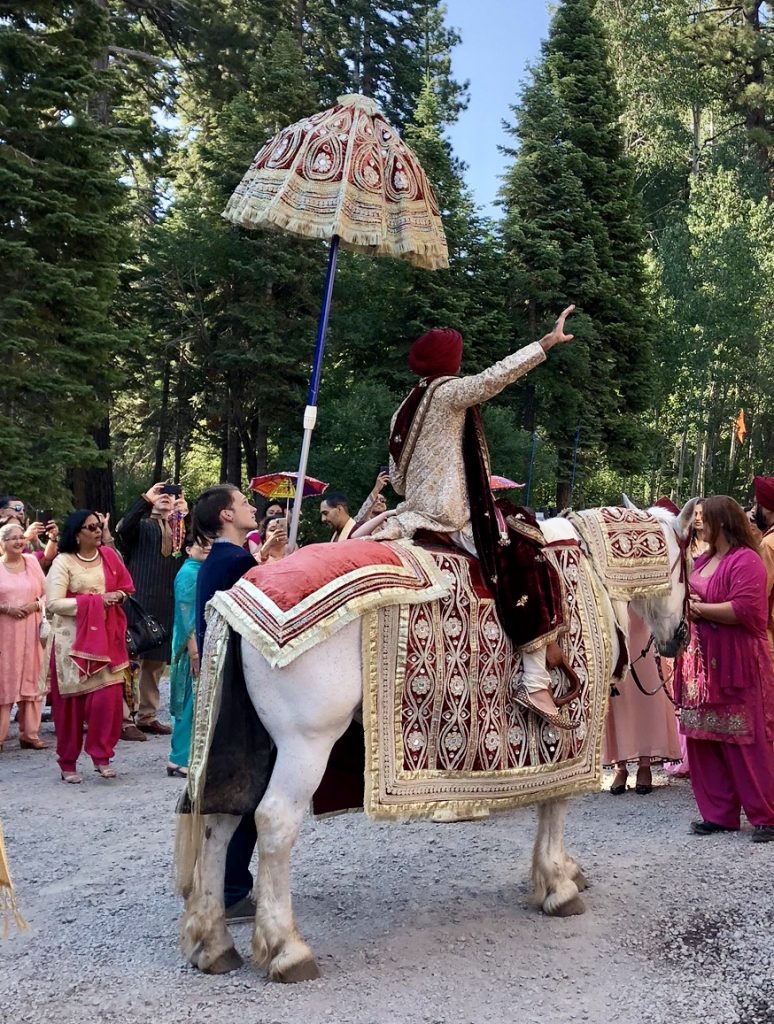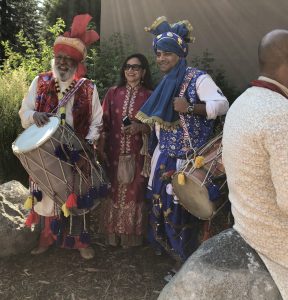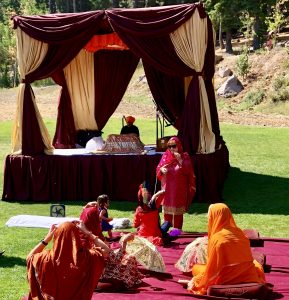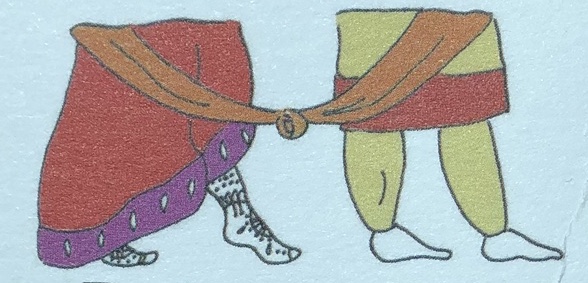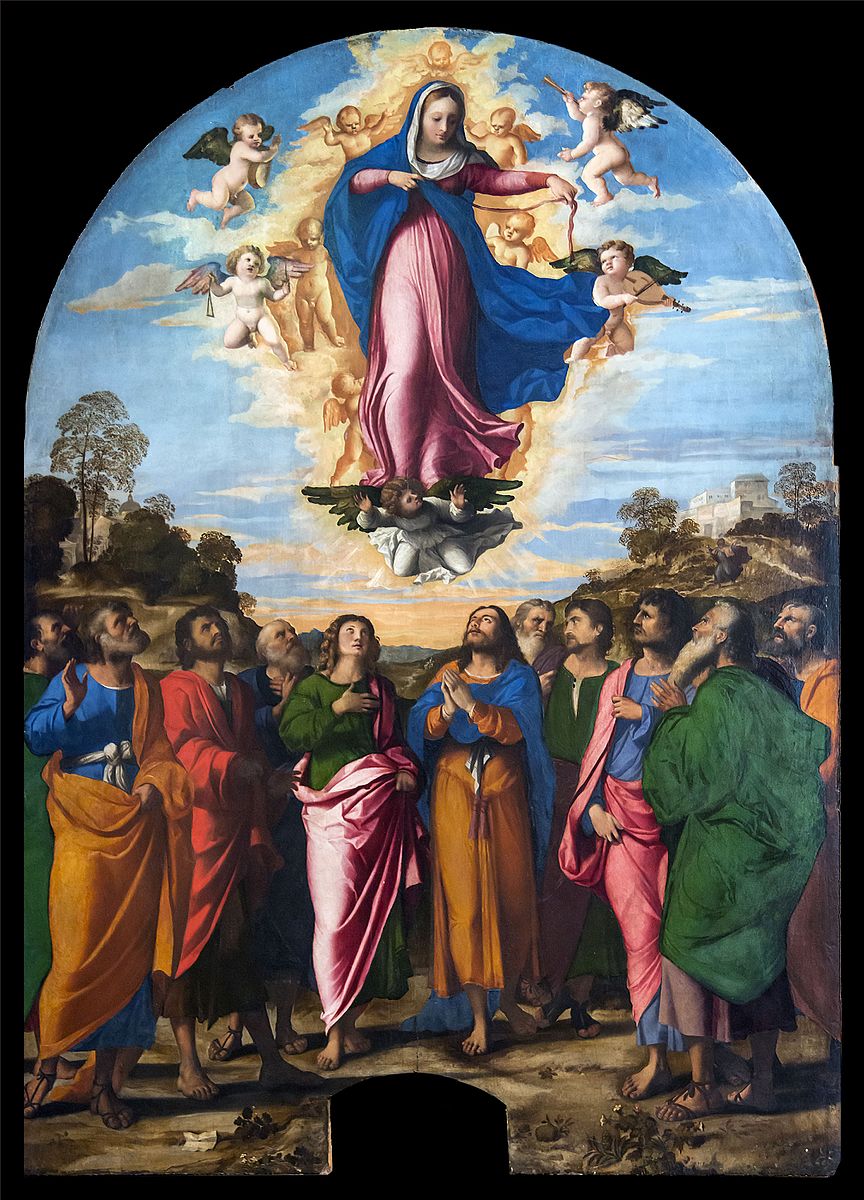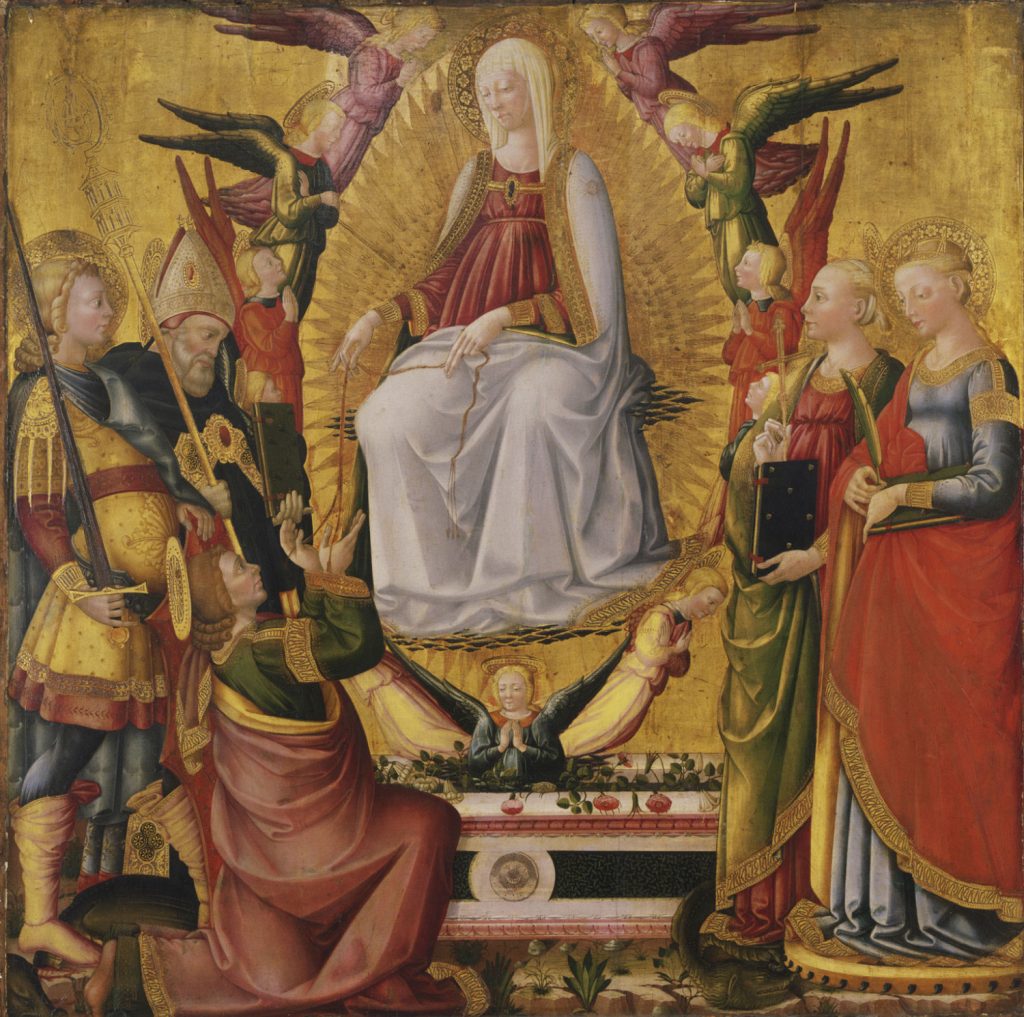I think I belong to another world. As strange as that sounds — I’m not talking aliens here or UFOs. I’m definitely a stranger here, in a good way. I’m connected to the world from which I came — much like the umbilical cord tethers a baby to the mother. I wrote about that umbilicus motif.
Ok, so stay with me. The idea of being tethered, or tied in, belted in, — that sort of thing — is pervasive in stories, myths, religion, and life. There is the apron, the girdle, the sash, the tie, the belt, the bracelet, the turbin, the cord… Maybe I should say I’m “tied” to another world.
Let me explain my most recent experience, where I found this idea of being tied in or tethered — in the Sikh religion. Since I am not Sikh, I do not purport to be an authority on this, but this is my experience and a little research.
Sikh Wedding Symbolism
The turbin is wrapped and tied
I recently attended a Sikh wedding. I purchased my Indian attire and joined in all the festivities. The wedding ceremony was fascinating. Truth is everywhere. As the groom was getting ready to ride in on a fully decorated horse, I was talking with one of the guests who explained to me the history of the Sikh religion and why many Sikh men wear turbins — also called a Dastar. I watched as the father of the groom wrapped his grandson’s head with this long piece of maroon cloth. We’re friends with the father, and he always wears the Dastar, but I didn’t know that it was a long cloth wrapped around his head (I thought it was like a hat, you just plop it on.) So the turbin is wrapped and tied.
Back to the man telling me the story of why they wear the turbin. The Sikh religion began about 600 years ago — the turbin became a sign so that anyone in trouble would recognize a Sikh who was bound to come to your rescue.
The Sikh Bracelet is an attachment to God
Some Sikh followers wear only the Sikh bracelet, called a Kara on their right wrist as a sign — and this man showed me his bracelet. The Kara bracelet is usually made of steel or iron, and symbolizes an unbreakable attachment to God. Again, this idea of being tethered to another world and God.
After the groom rode in on horseback to dancing and music, the two families said a prayer and welcomed each other, exchanging garlands symbolic of joining two families.
Next, all of the guests removed their shoes, covered their heads and sat on the floor on cushions — men on one side, women on the other. (Similar to LDS temples, and Jewish Synagogues during the Day of Atonement.) We were outdoors, but a tent and altar was set up for the holy book (Guru Granth Sahib), the head priest, and musicians. The groom and his family entered, bowed, and then the bride and her family entered and sat on the floor before the High Priest, who was saying prayers (I think, as it was in Punjab.)
The Bride holds the Palla (Groom’s Scarf)
You will notice in the photo of the groom on horseback, that he wears a sash, which is called the palla and is usually red/maroon in color and about 6 feet long. At one point in the ceremony, the bride’s father took the end of the groom’s scarf (palla) and placed it in his daughter’s hand — which symbolized that she was leaving her father’s care and now joining with her husband. She held the scarf in her hand. The High Priest said four verses of the Laavan hymn (also in Punjab, so I did not understand the words), and after each verse, the groom with the bride holding his scarf as a tether (and someone from her family by her side) circled the tent (altar with holy book.)
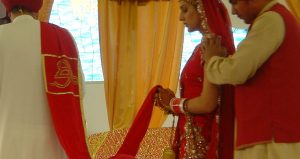
A Bride holds the Grooms scarf (the Palla) and with the support of a family member, circles the holy book.
Each verse of the Laav has meaning, and each circling signifies a stage of becoming one, after the fourth circle, the couple are one with God — the spiritual union of two produces perfect joy – and they are blissfully married. While we were still sitting, the Priest brought around a bowl of Karah Prashad, a sacred bready type pudding offering which he had blessed. He hands it to you from a large bowl, and you cup your hands and raise them to receive the offering. It is a symbolic ritual of offering and receiving — a symbol of all are equal, as all are offered.
Binding it all together
I was sharing all this with my son, who texted back:
Also, mainly the binding-garment is symbolic of god keeping the universe in place. We all think we could do it without god, and we all want to know so much and see it all….
But the reality is, without god it would all fly apart. I mean literally — beyond this world it’s massively scary. Any beyond that, it’s just darkness— or infinite lonely light. Regardless, without somebody choosing a center point, without a grounding, a strap to tie us in — our minds would literally become damaged from fear of the chaos. Without that Being, that entity, to bind us, we float into purposelessness.Belt, bracelet, girdle, apron, turbin. It binds. It wraps in the love of god. It shows you where to look for truth.
Roots of the word “religion”
As I thought it over, I recalled the meaning of the word “religion.” Hugh Nibley has a great course on the Pearl of Great Price (you can download it on my site, or find it on YouTube.) In lecture one, “Restoring what was Lost,” he talks about the origin of the word “religion” — that in many languages, the word is the same as English — “religion.”
He explains there are two theses on the source of the word “religion” — religio and religo, but most agree that it is the word religare — which means to bind the ligaments, ligation — anything you bind together
And religo means to bind back to something, to tie together with something else; and nobody knows what it is we are supposed to tie back to. St. Augustine and all had their theories about it. The one accepted today is that it always ties up with another world, or with heaven, or it ties you up with something beyond this world. (Hugh Nibley, Teachings of the Pearl of Great Price, Restoring what was Lost, pg. 2)
Look around you, and you will find this idea and symbol of being tied back to something greater and grander than this mortal earth. And you will find it in many religions, myths, and stories. I love finding truth, wherever it is. Maybe we need this tether to a higher world because, as Aldous Huxley said, “Maybe this world is another planet’s hell.”

